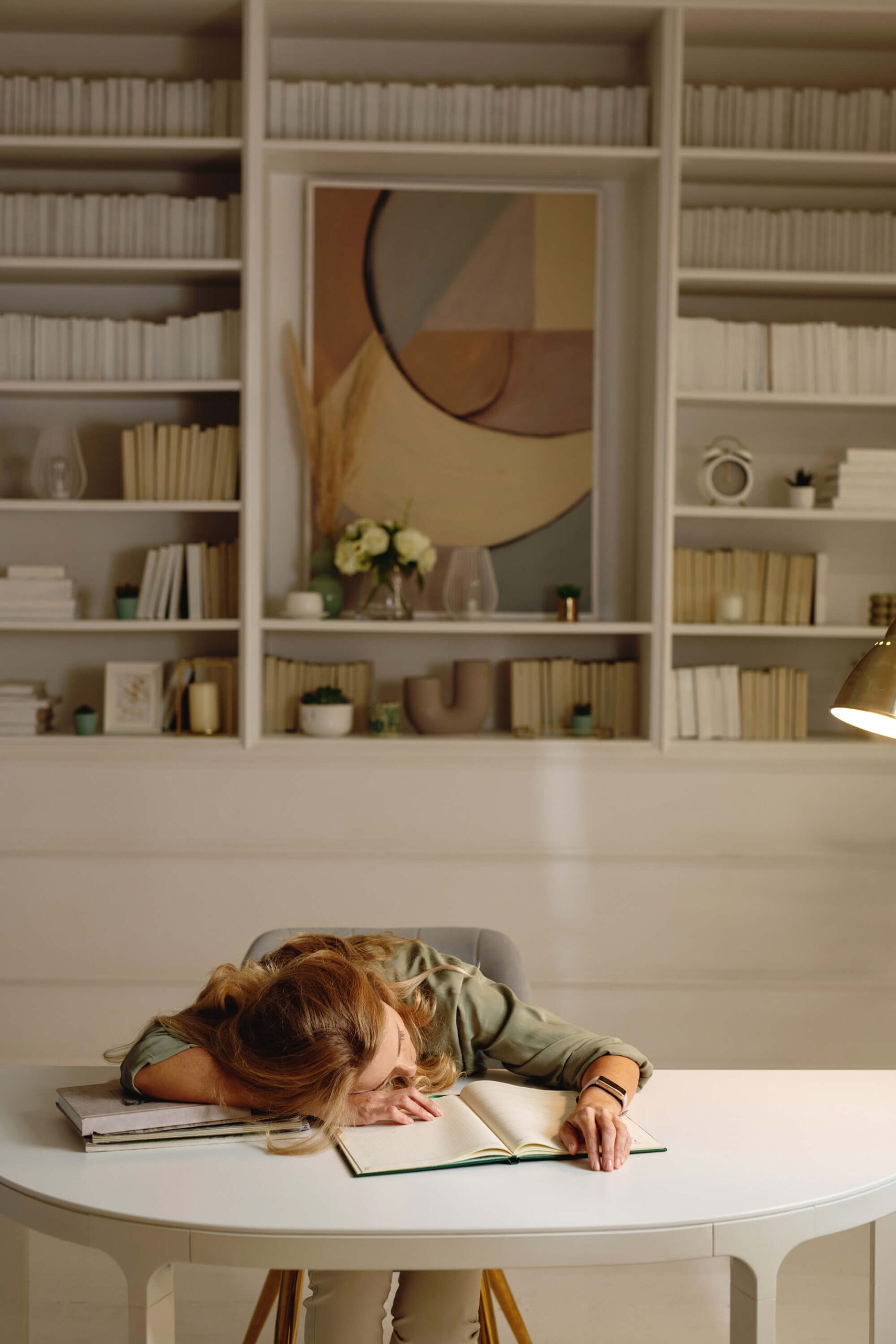Ever blacked out in the snack aisle and come home with six dips, no meals, and three different types of cookies “just in case”?
Same.
If you live with attention deficit hyperactivity disorder (or you’re just spectacularly distractible), grocery shopping can feel like an Olympic sport designed to test your executive function and your will to live.
The problem isn’t that you forgot your grocery list. It’s that your brain short-circuited halfway through aisle four and you rage-bought frozen waffles, chocolate, or wine.
But it doesn’t have to be that way.
Here’s how to build an ADHD shopping list you’ll actually use and maybe even learn to love. Okay, tolerate (with snacks).
Note: This post is for entertainment and informational purposes only. It does not provide medical advice, nutrition prescriptions, or diagnose your love of Pop-Tarts.
ADHD Shopping List: How to Build One You’ll Actually Use
The Real Problem Isn’t the List. It’s the Brain Gremlins.
Contrary to popular belief, we ADHDers can write lists.
What we can’t do? Remember that the lists exist. Or why we suddenly added “pickled garlic” and forgot toilet paper.
When you have ADHD symptoms like time blindness, poor working memory, and occasional identity crises in the produce section, using a shopping list becomes less of a tool and more of a personal betrayal.
Also, shoutout to all the adults (and even children) out there who open their notes app in the store, panic, and pretend to check texts instead. You’re my people.
You can reframe this: Remember, you don’t need the perfect list. You need an ADHD shopping list your brain won’t ghost.
Step 1: Build Your Master List Like It’s Your Brain’s BFF
Step one: stop reinventing the wheel every Sunday (or whatever day you subject yourself to buying food). You don’t need a gourmet plan. You need your personal food safety net.
Make a reusable grocery list of your ride-or-die staples. Things you actually eat. Things you can cook half-asleep. Things you panic-buy anyway.
Examples:
- Breakfasts: frozen waffles/pancakes, eggs, protein (like sausage – vegan or otherwise), yogurt (that you forget about until it expires)
- Proteins: rotisserie chicken, tofu, peanut butter (counts)
- Snacks: popcorn, baby carrots, oddly expensive trail mix
Stick it on your fridge. Save it in your phone. Tattoo it on your arm. (Or just print it. Your call.)
Also: balanced diet who? We’re aiming for “food that won’t ruin my afternoon.” That’s the vibe.
RELATED: ADHD Overwhelm: 9 Coping Tips That Actually Work
Step 2: Sort It Like You Actually Walk the Store
Let’s be honest: categories like “pantry” or “produce” only make sense if your brain operates in neat filing cabinets. Ours are more like glitter-filled hurricanes.
So instead of categories, think in zones. As in: “What aisle do I hit first so I don’t cry halfway through?”
Example Zones for Crafting Your ADHD Shopping List:
- Zone 1: coffee and emergency sweets (like dark chocolate), emotional support seltzer
- Zone 2: the healthy stuff. Think fruits, veggies, healthy fats like avocado (which you will likely forget you bought)
- Zone 3: proteins and suspiciously overpriced rotisserie chickens
- Zone 4: pantry staples, impulse items, backup meals you’ll be glad you have
Bonus: this helps you dodge ultra-processed foods loaded with additives, artificial colors, and regret. Instead, aim for foods that leave you feeling steady and satisfied (whatever that looks like for you). You’re welcome.
Extra bonus: It’s a huge help if you shop at a store you’re familiar with and remember (AKA use your weird intuition) what order the aisles are in and where all your go-tos are.
Step 3: The “Lazy Day List”
You know those weeks when planning a full list feels like trying to do taxes on a rollercoaster?
Enter: the Lazy Day List.
This is your minimalist, no-shame ADHD shopping list for surviving low-energy weeks without resorting to spoonfuls of peanut butter and sadness.
Sample Lazy Day Items:
- Frozen burritos (bonus points if they have protein)
- Pre-chopped veggies (thank you, whoever invented this)
- Boil-in-bag rice
- Canned soup + crackers
- Protein bars with zero added sugars and 100% lies about taste
You’re not striving for nutrition awards. You’re aiming for food that keeps your blood sugar stable and your mental health from free-falling.
Step 4: Outsource to Future You
Repeat after me: Your brain is not a filing cabinet. It’s a ball pit with hundreds of colorful balls representing your overflowing thoughts.
So, if you want to remember what you need? You’ll need help.
Do this instead:
- Snap a photo of your pantry. Yes, even if it’s chaos.
- Use voice-to-text on your phone to add to your ADHD shopping list (or yell at Alexa)
- Slap a whiteboard on your fridge for real-time additions
Run out of your favorite frozen dinner? Write on the whiteboard.
Think of a random recipe you want to make soon? Add it to your shopping list via voice-to-text.
This isn’t cheating. This is survival. People with attention deficit need visual and external cues to function. Normalize the pantry photo dump and food-related voice notes.
RELATED: How to Handle Errands With ADHD (Without Melting Down)
Step 5: Turn Shopping Into a Less Dreadworthy Affair
I know I’m not alone feeling like this. But grocery shopping is about as fun as a root canal when you’re overstimulated, hungry, and hiding from screaming toddlers in aisle six.
Turn shopping into a tiny ritual. A vibe. A reset, if you will.
Here’s how:
- Stick earbuds in your ears and turn on your comfort playlist (classical, lo-fi beats, existential podcasts – you do you).
- Grab your drink of choice (matcha, coffee, something iced and overpriced).
- Walk in like you’re on a side quest and on a mission.
- Buy one thing just because it makes your serotonin spark.
Using this method, suddenly, it’s not a chore. Self-preservation kicks in and makes grocery shopping tolerable at worst and fun at best.
Also? Grabbing a few fatty acids, complex carbs, or foods that vaguely resemble a balanced diet? Bonus points for your brain health.
BONUS: Pantry Picks That Are ADHD-ishly Smart
Let’s not pretend this is a nutritional advice blog. You will not find smoothie bowl inspo here.
But if you want to stock up on some ADHD-friendly pantry boosts? Here are a few that even my goblin brain approves of:
Smart Staples:
- Fatty acids: sardines, walnuts, flax, or anything omega-y
- Real protein: eggs, beans, rotisserie chicken, in case you forget to eat
- Minimal additives or artificial colors (within reason)
- Healthy fats: olive oil, almond butter, and vibes
- Anything that doesn’t require three steps and an emotional pep talk
None of this will “treat” ADHD, but it may keep you full, calm, and slightly less likely to spiral at 2 p.m.
RELATED: ADHD Decision Fatigue: 6 Lazy-Genius Fixes That Actually Help
Final Thought: The List Isn’t the Goal. Sanity Is.
Fun fact: You don’t need a perfect diet, or color-coded lists, or the fridge from a Pinterest reel.
You need food that supports your brain, your life, and your current bandwidth.
You also need a plan to get this food that doesn’t want to make you run screaming from your kitchen.
If you made a grocery list this week *and* used it? That’s a win. If you walked into a store with a plan and walked out with even 70% of it? Call the press.
Because real progress isn’t aesthetic. Progress can be stacks of sticky notes, shortcut meals, and one good choice at a time.
If you’re doing just a fraction of that, you’re doing great.
Note: This article is brought to you by real-life chaos and definitely does not provide medical advice. Please talk to a medical professional, like a doctor or a therapist, if you have questions about ADHD, diet, or whether it’s okay to eat cereal for dinner. (It is.).

For the days your brain ghosts the grocery list.
Real-Life
Work in Progress.
Founder. Writer.
Roxy is the creator of The Everyday Flourish, a relatable personal growth blog for women who are tired of burnout, chaos, and hustle culture.
A recovering overthinker and unofficial life guinea pig, she shares honest self-care strategies, ADHD-friendly productivity tips, and mindset shifts that actually feel doable.
Around here, personal growth comes with grace, not pressure - and a lot fewer to-do lists.








